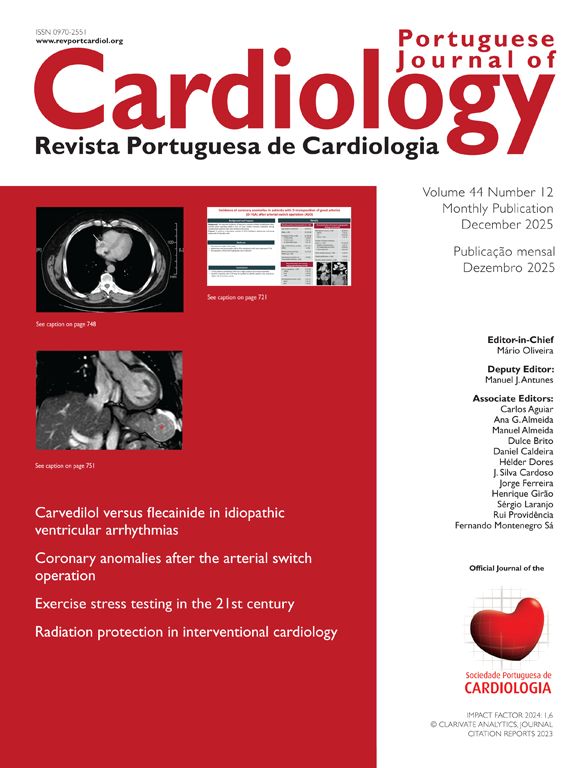In clinical practice, a de Winter pattern has been regarded as an interesting electrocardiographic (ECG) phenomenon, and is usually considered as an anterior ST segment elevation myocardial infarction (STEMI) equivalent, observed mainly in relatively young males.1–4 In its classical form, a de Winter pattern presents with certain ECG findings including J point or upsloping ST segment depression (>1 mm) and peaked T waves in precordial leads (usually in V2 and V3) along with a mild ST segment elevation (0.5-1 mm) in the lead aVR.2–4 Mechanistically, the occurrence of this phenomenon was previously attributed to factors including endocardial conduction delay, severe transmural ischemia and defective potassium channels, etc.3 The recently published article by Paixão-Ferreira et al.1 reported an atypical case of a de Winter pattern in a middle-aged male patient. The authors should be congratulated for their timely diagnosis and management of such an atypical de Winter case. Accordingly, we would like to make some comments on the potential implications of an atypical de Winter pattern (with ECG changes that do not conform absolutely to the typical de Winter pattern) in a clinical setting.
Clinically, a de Winter pattern may arise in atypical forms in certain cases, potentially mimicking other semi-urgent cardiovascular conditions.1,2 It requires a high index of suspicion for the early diagnosis of associated STEMI. An atypical de Winter pattern generally refers to alterations in the characteristics and/or location of the classical de Winter criteria. It manifests as atypical ECG findings including widespread J point or downsloping ST segment depression, T wave changes in other derivations including V3-V6 and an absence of ST segment elevation in the lead aVR, etc.1–3 The case reported by Paixão-Ferreira et al. is of a downsloping ST segment depression in leads V2-V3 (and, to some extent, in V1) with an absence of significant ST segment elevation in lead aVR1,1 and thus mimics a true posterior STEMI or acute ischemia due to subtotal occlusion of the left anterior descending (LAD) artery. Similarly, we recently reported an atypical de Winter pattern due an acute LAD osteal occlusion, which strongly mimicked critical left main coronary artery (LMCA) stenosis, in a 36 year-old man presenting with widespread ST segment depression accompanied by ST segment elevation in lead aVR, yet presented a normal LMCA on an invasive coronary angiogram (CAG).2 Furthermore, a recent case report documented an atypical de Winter pattern characterized by prominent T waves and downsloping ST segment depression in leads V3-V6, along with mild ST segment depression in the inferior leads in a young male.3 More interestingly, an atypical de Winter pattern emerging in the inferolateral leads (with J point depression) was previously reported to be associated with an inferoposterior STEMI, due to acute right coronary artery occlusion.5 Therefore, the emergence of an atypical de Winter pattern might not be exclusively confined to an LAD occlusion associated with an anterior STEMI.5 Demographically speaking, atypical de Winter patterns might also have a significant predilection for young or middle-aged males.1–3,5 Mechanistically, the emergence of these atypical de Winter cases might potentially be attributable to the impact of certain anatomical factors (cardiac rotation, etc.) or pre-existing ECG changes, etc.
Interestingly, alternating episodes of anterior ST segment elevation on ECG might be encountered in patients with a de Winter pattern, particularly in those with an atypical presentation,2,3 suggesting the value of frequent or continuous ECG monitoring for the absolute confirmation of acute anterior STEMI, regardless of an invasive CAG. Accordingly, we wonder whether the de Winter pattern in Paixão-Ferreira et al.’s patient1 emerged in a persistent manner (static form) or alternated with findings of classical precordial ST segment elevation (dynamic form)3 preceding the restoration of LAD perfusion.
In conclusion, we are strongly of the opinion that atypical de Winter patterns (with ECG findings that do not strictly conform to the typical pattern) might be more prevalent than the classical pattern, and might lead to a significant delay in the diagnosis and management of the associated STEMI. This delay might be largely based on the fact that these atypical patterns possibly have a stronger analogy to ECG findings of other semi-urgent cardiovascular conditions including non-STEMI, critical LMCA stenosis, etc. Therefore, cardiologists should not feel strictly bound by the categorical definition of classical de Winter pattern and should also consider atypical patterns as STEMI equivalents (particularly in the presence of certain clinical factors including persistent chest pain, etc.) that require emergent CAG and subsequent reperfusion strategies.
Conflicts of interestThe authors have no conflicts of interest to declare.





